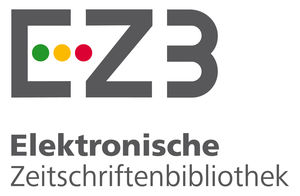Estudio de la derivada parcial por medio de las aprehensiones en el registro gráfico de funciones de dos variables con estudiantes de ingeniería<br>Study of the partial derivate by the apprehensions in the graphic register of functions of two variables with engineering students
DOI:
https://doi.org/10.23925/1983-3156.2019v21i1p049-068Palavras-chave:
Visualización, Aprehensiones, Registro gráfico, Ingeniería didáctica, Cálculo.Resumo
El objetivo de este artículo es extender el estudio de Duval en relación a las aprehensiones en el registro gráfico de una función de dos variables. La información que el gráfico de este tipo de funciones nos proporciona, es importante para la construcción de conocimientos de las funciones de dos variables y para sus aplicaciones. Nuestra investigación es cualitativa y utilizamos como metodología la Ingeniería Didáctica. Constatamos que la articulación de las aprehensiones en el registro gráfico permitió a estudiantes de ingeniería conjeturar propiedades de funciones de dos variables, cuando, por ejemplo, el estudiante aplica esas nociones a problemas de optimización.
Considering the importance of the knowledge that the graphical representation of functions of two variables provides for applications in engineering courses we present in this article a didactic situation that is part of the didactic sequence of a doctorate. The research was developed as a qualitative research of the type didactic engineering and had as objective to develop, in the students of second year of engineering, the visualization, according to Duval, researching, mainly, the articulations of the apprehensions in the graphic register in a computational algebraic system (CAS). We note that the articulation of the apprehensions in the graphic register allowed engineering students to conjecture properties of functions of two variables, when, for example, the student applies those notions to problems of optimization as is the case here presented.
Referências
DUVAL, R. Les différents fonctionnements possibles d'une figure dans une dérmarche géométric. Repères, n.17, p. 121-138, 1994.
DUVAL, R. Representation, vision and visualization: Cognitive functions in mathematical thinking. Basic issues for learning. In HITT, F.; SANTOS, M. (Eds.). Proceedings of the 21st North American PME Conference, 1999, v.1, p. 3-26.
DUVAL, R. Los problemas Fundamentales en el Aprendizaje de la Matemáticas y las Formas Superiores en el Desarrollo Cognitivo. Traducción de Myriam Vega Restrepo. Colombia: Universidad del Valle, Instituto de Educación y Pedagogía, Grupo de Educación Matemática, 2004.
GUZMÁN, M. El rincón de la pizarra. Ensayos de visualización en análisis matemático. España, Ediciones Pirámide, S.A. 1996.
HENRIQUES, A. L'enseignement et L'apprentissage des Integrales Multiples: Analyse Didactique Integrant L'usage du Logiciel Maple. 2006. 536 f. Tesis (Doctorado en Didáctica de las Matemáticas). Universite Joseph Fourier. Grenoble. Francia. 2006. Disponible en: < https://tel.archives-ouvertes.fr/tel-00100353/document>. Acceso en: 08 ene.2015.
INGAR, K. A visualização na Aprendizagem dos Valores Máximos e Mínimos Locais da Função de Duas Variáveis Reais. 2014. 202 f. Tesis ( Doctorado em Educación Matemática) - Pontifícia Universidade Católica de São Paulo, São Paulo, Brasil. 2014.
INGAR, K. y SILVA, M. A visualização de valores máximos e mínimos de funções de duas variáveis. In: 12TH INTERNATIONAL CONFERENCE ON TECHNOLOGY IN MATHEMATICS TEACHING, 12, 2015, Faro, Portugal. Proceedings… Faro: Universidad de Algarve, 2015. p. 687-695.
INGAR, K. y SILVA, M. El Aprendizaje de los Valores Máximos y Mínimos Locales de Funciones de dos Variables a partir de la Noción de Registros de Representación Semiótica. En: FLORES y UGARTE (Eds.). Investigaciones en Educación Matemática. Lima: Fondo Editorial PUCP, 2016. p. 103-122.
KABAEL, T. The effects of the function machine on students'understanding levels and their image and definition for the concept of function. In SWARS, S. L.; STINSON, D.W., y LEMONS-SMITH, S. (Eds.). Proceedings of the 31sr anual meeting of the North American Chapter of the International Group for the Psychology of Mathematics education, v. 5, p. 58-64. 2009.
KASHEFI, H.; ZALEHA, I y MOHAMMAD, Y. Obstacles in the Learning of Two-variable Functions through Mathematical Thinking Approach. Procedia Social and Behavioral Sciences, 8, p. 173-180, 2010. Disponible en: < https://www.sciencedirect.com/science/article/pii/S1877042810021294 >.
MONTIEL, M., WILHELMI, M., VIDAKOVIC, D. y ELSTAK, I. Using the onto-semiotic approach to identify and analyze mathematical meaning when transiting between different coordinate systems in a multivariate context. Educational Studies in Mathematics, v. 72, n. 2, p. 139-160, 2009. Disponible en: < https://slides.tips/using-the-onto-semiotic-approach-to-identify-and-analyze-mathematical-meaning-wh.html>.
ROBERT, A. Outils d'analyses des contenus mathématiques à enseigner au lycée et à l'université, Recherches en didactique des mathématiques, v. 18, n. 2, p. 139-190, 1998.
TRIGUEROS, M y MARTÍNEZ-PLANELL, R. Geometrical representations in the learning of two-variable functions. Educational Studies in Mathematics, v. 73, n. 1, p. 3-19, 2010. Disponible en : < https://www.researchgate.net/publication/225530977_Geometrical_representations_in_the_learning_of_two-variable_functions>
TRIGUEROS, M., y MARTÍNEZ-PLANELL, R. How are graphs of two variable functions taught? In: WIEST L.R y LAMBERG T. (Eds.). Proceedings of the 33rd Annual Metting of the North America Chapter of the International Group for the Psychology of Mathematics Education. Reno, Nevada, USA, 2011.
YERUSHALMY, M. Designing representations: Reasonning about functions of two variables. Journal for Research in Mathematics Education, 28, p. 431-466. 1997
ZIMMERMANN, W. y CUNNINGHAM. Visualization in teaching and learning mathematics. In: Zimmermann, W. y Cunningham, S. (Eds). Visualization in Teaching and Learning Mathematics, MAA. n. 19. 1991
Downloads
Publicado
Como Citar
Edição
Seção
Licença
Autores que publicam nesta revista concordam com os seguintes termos:- Autores mantém os direitos autorais e concedem à revista o direito de primeira publicação, com o trabalho simultaneamente licenciado sob a Licença Creative Commons Attribution que permite o compartilhamento do trabalho com reconhecimento da autoria e publicação inicial nesta revista.
- Autores têm autorização para assumir contratos adicionais separadamente, para distribuição não-exclusiva da versão do trabalho publicada nesta revista (ex.: publicar em repositório institucional ou como capítulo de livro), com reconhecimento de autoria e publicação inicial nesta revista.
- Autores têm permissão e são estimulados a publicar e distribuir seu trabalho online (ex.: em repositórios institucionais ou na sua página pessoal) a qualquer ponto antes ou durante o processo editorial, já que isso pode gerar alterações produtivas, bem como aumentar o impacto e a citação do trabalho publicado (Veja O Efeito do Acesso Livre).













